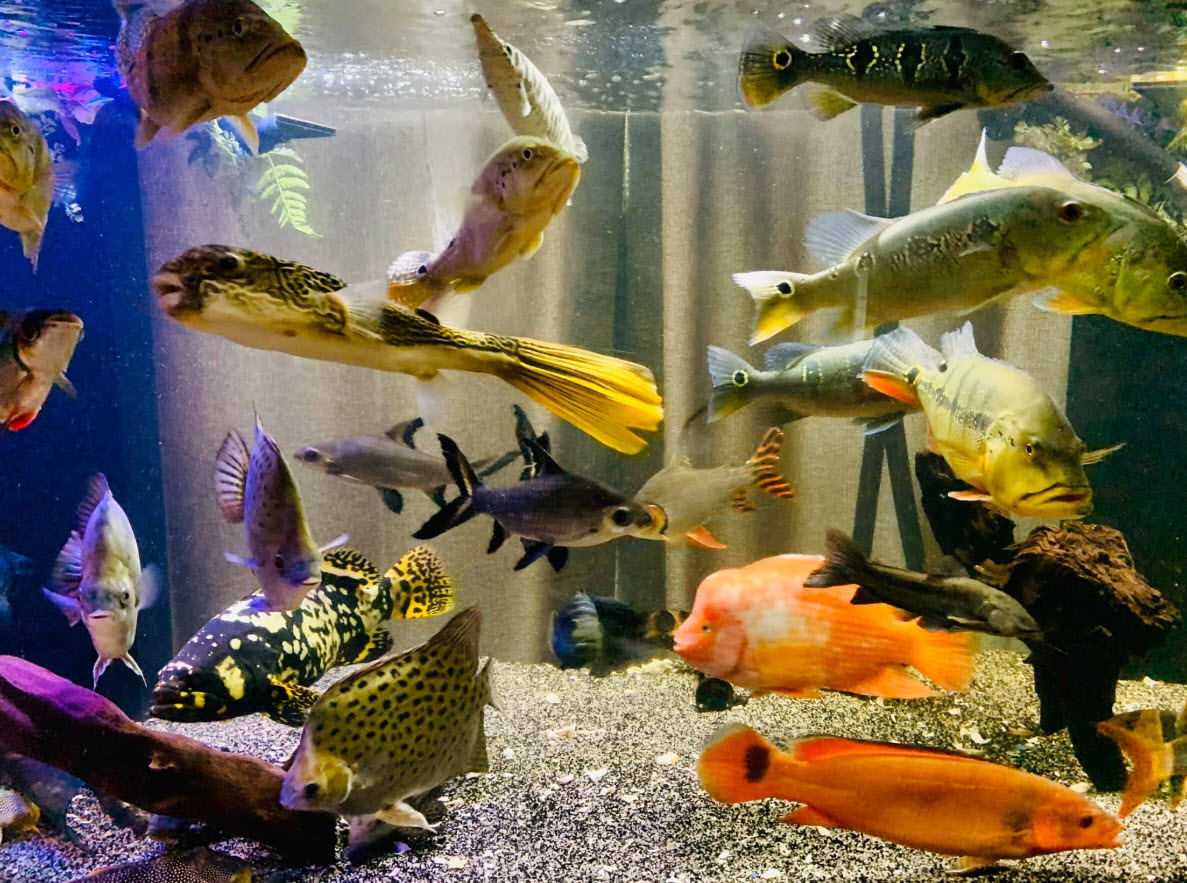
I can only tell you what I do. There are very many ways to cycle an aquarium and they all seem to work well. But being an obsessive-compulsive chemist nerd, I’ve come up with what I feel gives the fastest possible cycling time where the tank is capable of handling a large load of fish when the cycle is done. Note it is possible to cycle faster than this, the tank just won’t handle much of the way of fish load when said and done.
Note there are two distinct methods recommended here-in. One method assumes one is over-filtering like I do, with large filters and excellent media. The other method is if one has a filter which is NOT over-filtered. If one tries to cycle a poorly filtered aquarium with the method I use, one can be cycling forever, literally.
WARNING: This method is VERY complex and just not needed for most hobbyists. So use one of the simpler methods described elsewhere if you are not interested in becoming very confused. Or one can modify this method by just using a few of the methods and chemicals described.
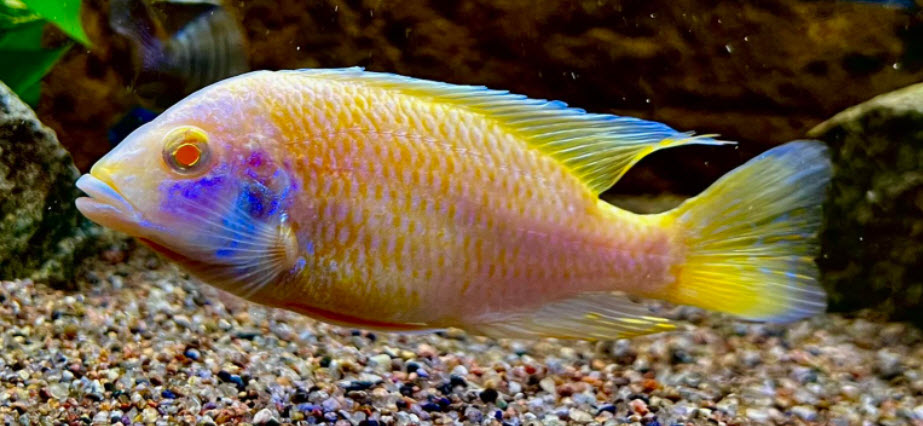
Inoculate
When I set up a new aquarium, I don’t add fish, but I do add established aquarium media or “gunk”. I take some bags of media (I use mainly K1 media, plastic pot scrubbers, and foam) which are brown with “gunk” and put them in the canister or the sump in the new aquarium. I take a sponge/foam from an established canister filter or a sponge filter and I squeeze it thoroughly into the water of the new aquarium. This creates a brown soup.
It is important to get these brown squeezings “stuck” in a place where there is good flow, like on the filter media. If one just leaves it lying at the bottom of a tank it won’t work very well. I keep stirring the tank whenever I use brown squeezings, like ten times a day. To oxidize ammonia beneficial bacteria need both a surface to attach to AND a good flow over that surface
Note that if one has no established aquarium one can get brown gunk, one can use a level teaspoon per 25 gallons of black soil from a potted plant or manure compost (Black Kow) from the garden store. A teaspoon of pond mud is also excellent. Note that the manure compost must be well-composted materials with less than 1% nitrogen in them. Do not use manure or other materials that haven’t been thoroughly composted. Note commercial soil mixes from the garden store do NOT work (they are sterilized).
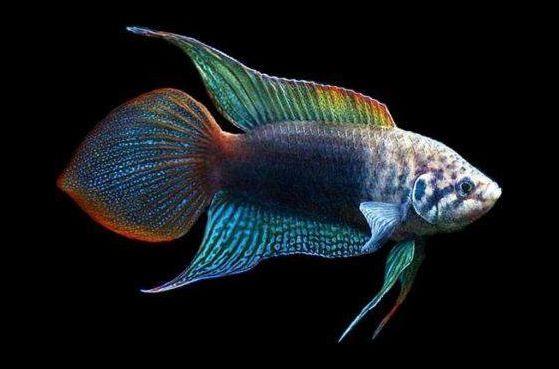
Additions for the Aquarium
These adds depend on the filtration. If the filtration is very large with a good media (pot scrubbers, foam, or K1) then use the first method, If the filtration is more moderate, like a hang on back or internal cartridge, use the second method, This difference in methods reflects the fact that some small filters just can’t handle much ammonia. If one keeps adding large daily doses of ammonia some small filters will NEVER cycle. They just do not have the capacity needed.
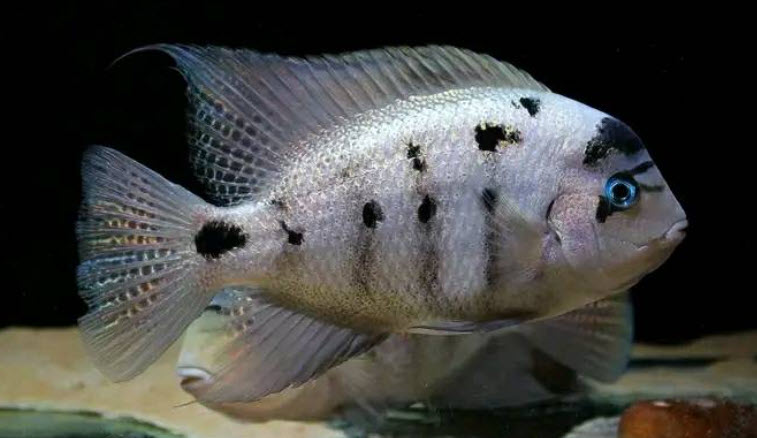
Well Filtered Aquarium Process
If the aquarium has a large amount of filtration (canister, sump, under-gravel) with good filter media like K1, pot scrubbers or foam, for every 50 gallons of soft aquarium water I add the following:
One time adds, done ONLY when starting the cycling:
- ****Add one level teaspoon ammonium chloride powder, NH4Cl (internet purchase), ~6 grams (11 ppm ammonia) on day one.(Note any ammonia salt is fine)
- ***Three grams (one level half teaspoon) of a phosphate fertilizer of some sort, one time add.
- **32 grams (two-level tablespoons) sodium bicarbonate or baking soda, NaHCO3
- *One level teaspoon sodium nitrite powder NaNO2 or potassium nitrite (internet purchase from woodworking supply house), ~ 6 grams (10 ppm nitrite) on day one.
- 5 grams (one level teaspoon) table sugar
- One package of baker’s yeast
- Five grams (one level teaspoon) Plaster of Paris (Calcium Sulfate CaSO4 and Calcium Carbonate CaCO3)
- Five grams (one level teaspoon) Epsom salts, magnesium sulfate, MgSO4
- Pinch of Iron Sulfate from my garden supplies (Ferrous Sulfate FeSO4)
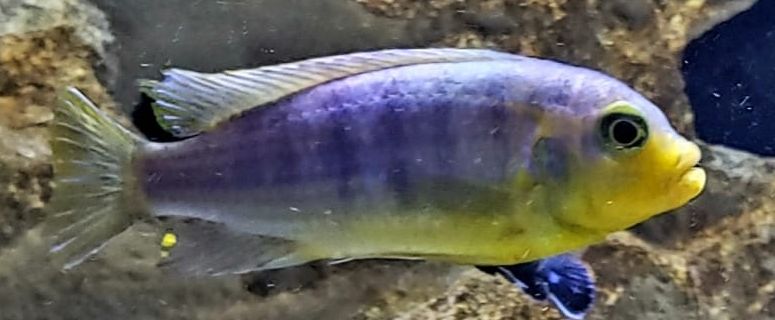
Daily Additions for well filtered aquariums:
- ***** Daily addition of an ammonia feed: Every day there after add one grams (one level quarter teaspoon) ammonium chloride powder, NH4Cl (internet purchase), ~2 ppm ammonia (Note any ammonia salt is fine) every single day.
- ****Sufficient sodium bicarbonate (or baking soda) to maintain a 7.4 pH at all times. Sometimes the amount of sodium bicarbonate required on a daily basis is surprising. One gram of ammonium salt will consume roughly three grams of sodium bicarbonate.
- *Daily addition of a nitrite feed: Then one gram (one level quarter teaspoon) sodium nitrite powder NaNO2 (internet purchase), ~2 ppm nitrite every single day. This speeds up cycling by about one week.
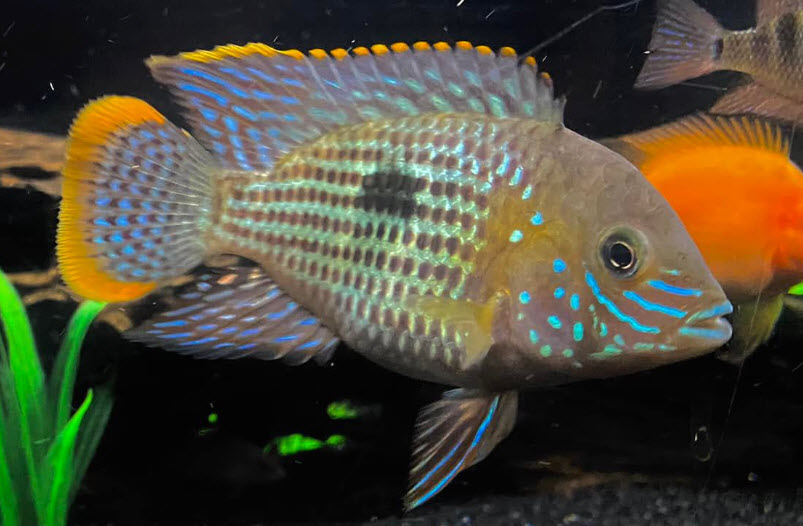
Poorly Filtered Aquarium Process
If the aquarium has a hang-on-back, small sponge, internal canister, external canister with bioballs and ceramic rings (i.e. poor filtration) change to adding this. For every 50 gallons of soft aquarium water add the following:
One time adds, done ONLY when starting the cycling:
- *****Add one level half teaspoon ammonium chloride powder, NH4Cl (internet purchase), ~3 grams (5 ppm ammonia) (Note any ammonia salt is fine)
- ***Three grams (one level half teaspoon) of a phosphate fertilizer of some sort
- **32 grams (two-level tablespoons) sodium bicarbonate or baking soda, NaHCO3
- *Nitrite: One level half teaspoon sodium nitrite powder NaNO2 or potassium nitrite (internet purchase), ~3 grams (~5 ppm nitrite)
- 2.5 grams (one level half teaspoon) table sugar
- One package of baker’s yeast
- Five grams (one level teaspoon) Plaster of Paris (Calcium Sulfate CaSO4 and Calcium Carbonate CaCO3)
- Five grams (one level teaspoon) Epsom salts, magnesium sulfate, MgSO4
- Pinch of Iron Sulfate from my garden supplies (Ferrous Sulfate FeSO4)
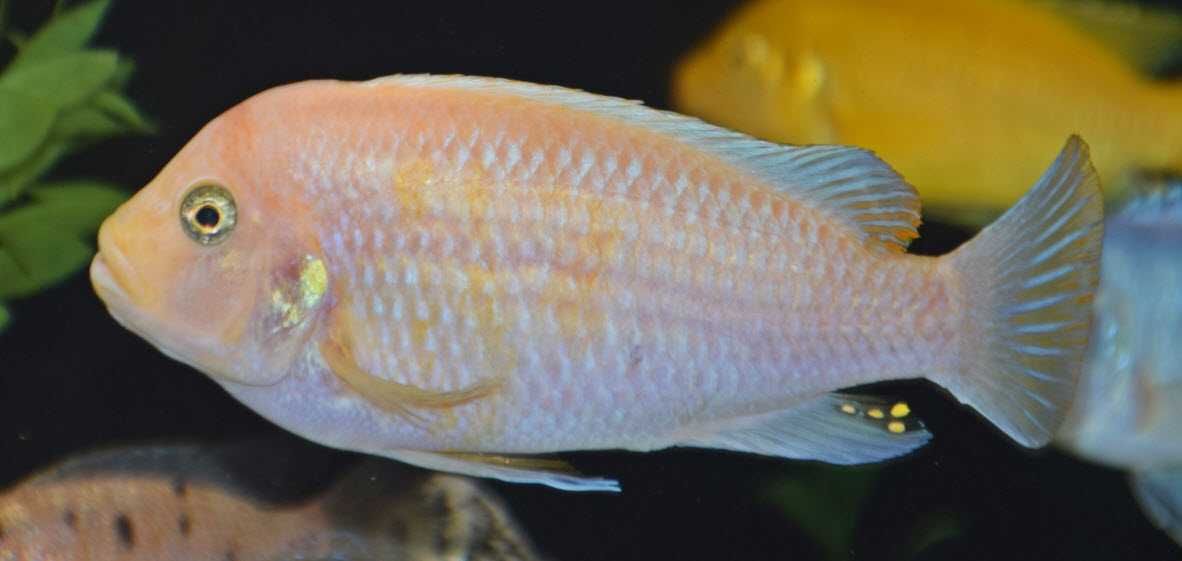
Daily Additions for poorly filtered:
-
*****An ammonia feed: Then add one eighth teaspoon (~1/2 gram or 1 ppm ammonia) every single day. Note any ammonia salt is fine.
- ****Sufficient sodium bicarbonate (or baking soda) to maintain a 7.4 pH at all times.
- *Nitrite: Then add one eighth teaspoon (~1/2 gram or 1 ppm nitrite) every single day. Note any nitrite salt is fine.
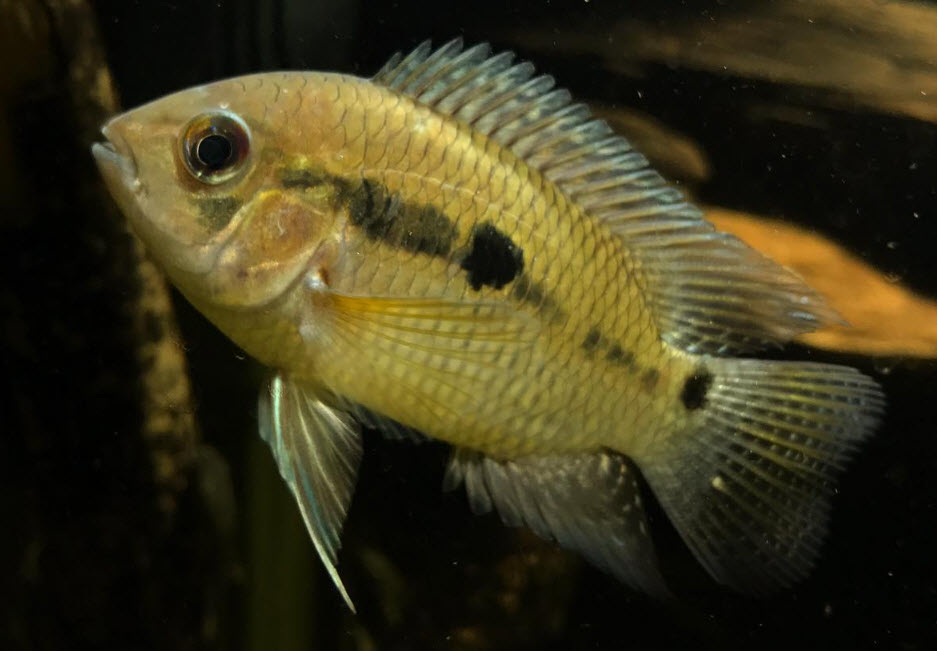
Do this for a week then start measuring the ammonia levels. When ammonia and nitrite both hit zero after 24 hours after a chemical addition your cycle is done. You can stop all additions and add the fish or continue with the maturation process below.
Note that the nitrite has limited availability. If one cannot get the nitrite double all the ammonium chloride additions.
Note that the sugar and yeast will consume large amounts of ammonia in something called “assimilatory denitrification” and can initially eat up the ammonia and nitrite in as little as two hours without producing nitrites or nitrates. Just keep on adding ammonia for at least a week. Ammonia will start lingering around then nitrites and/or nitrates will start showing up.
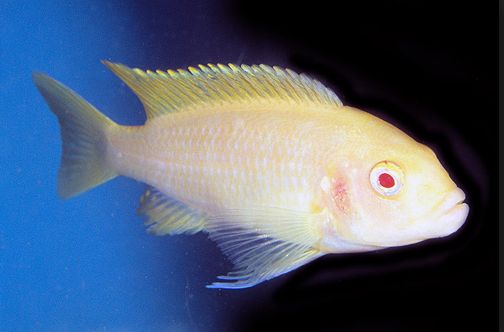
The Cycling Process I Use
- Turn on the filters and let the cycling commence.
- Take the temperature up to 850 to 900 F.
- Aerate the Hell out of the aquarium with a big air pump and some huge air stones designed for ponds. If you don’t aerate well you will get some pretty bad smells and things won’t go as fast.
- Stir up the brown gunk on the top of the gravel every time one passes by the aquarium. The idea is to get the brown gunk into the fast flow areas where it can create more beneficial bacteria. Note I use under-gravel filters. If I didn’t use under-gravel filters I would stir up all of the gravel. A bladed wavemaker aimed at the surface of the substrate is very useful here.
- Never change the water.
- Do not add plants
- Leave the lights off initially.
- Measure the pH at least every other day. Keep the pH above 7.4 by adding sodium bicarbonate (or baking soda) when the pH drops below 7.4, Note that adding a lot of ammonia will result in the need for a LOT of sodium bicarbonate. For every one gram ammonium salt one will need very roughly three grams sodium bicarbonate.
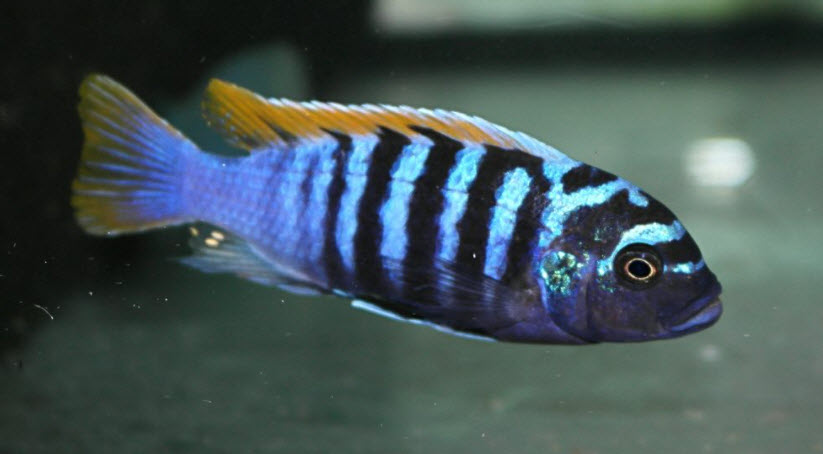
Just let nature take its course. After one week, measure the nitrite and ammonia 24 hours after an ammonia addition. About half the time, after ten days, if one has a large amount of good filter media, there will be zero (technically I aim for less than 0.25) nitrite and ammonia and the cycling is done. And about half the time one must go another week and rarely does one needs four weeks (this is a natural process and not very predictable). DO NOT STOP ADDING THE FEEDS. Just have three things: patience, patience, and patience. Again, Mother Nature is not predictable.
Take this as an illustration of how a very obsessive-compulsive chemist can take something very simple and make it very complicated. Note ALL these additions save the ammonia add are completely optional. The number of asterisks indicates the relative importance of the additions.
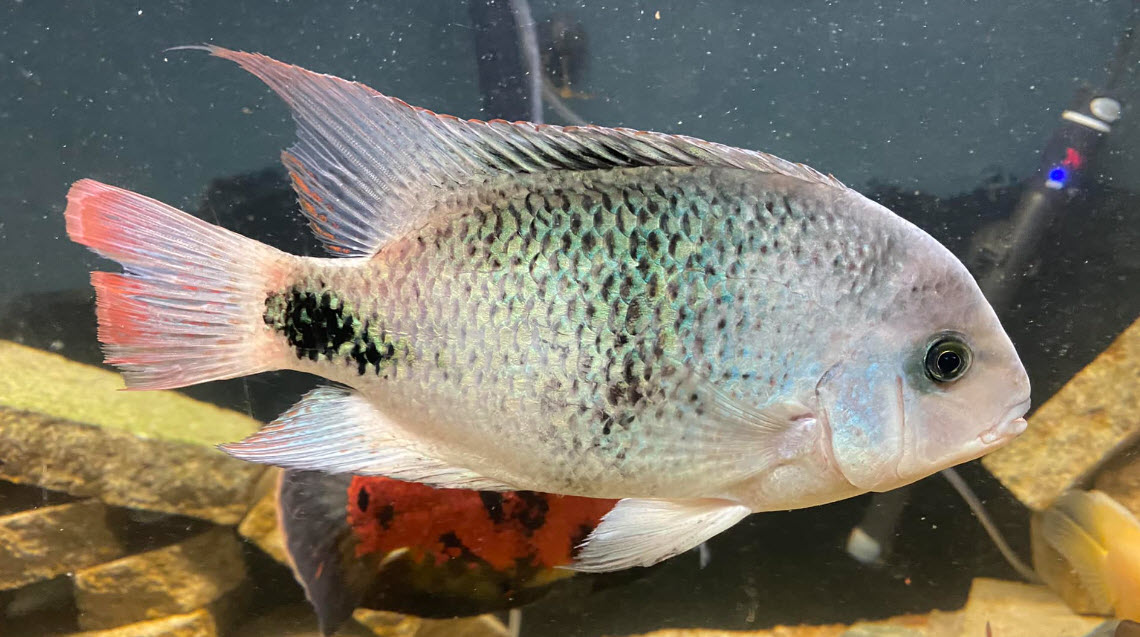
Anecdotal Evidence from Fairoz
Normally I avoid anecdotal evidence but one comment I received seems pertinent here:
“Hi Dave I want to share here. I started a new aquarium using the recipe from the way you cycle. The first day I used 6 grams of ammonia chloride, 6 grams of sodium nitrite, 5 grams of Epsom salt, 5 grams of sugar, 1 packet of baker’s yeast and 3 grams of phosphate fertilizer. Then I put 2 teaspoons of black soil from potted plants in the socks and soak them five times a day. Then I added 1 gram of ammonium chloride and 1 gram of sodium nitrite every day. On the 7th day I checked the parameters using the API Master Kit and the PH reading was 7.8, Ammonia turned blue, meaning it was over 8 ppm, nitrite 0.5 ppm. Day 10 I checked the water parameters again. PH drop to 6.0, ammonia 4ppm. I use sodium bicarbonate to raise the pH to 7.6 and keep adding ammonia and nitrite. It surprised me when on the 12th day I checked the water parameters reading ammonia 0, nitrite 0 and pH 6.8. Now my tank has cycled for only 12 days using your method. Thanks a lot Dave for willing to share knowledge”.
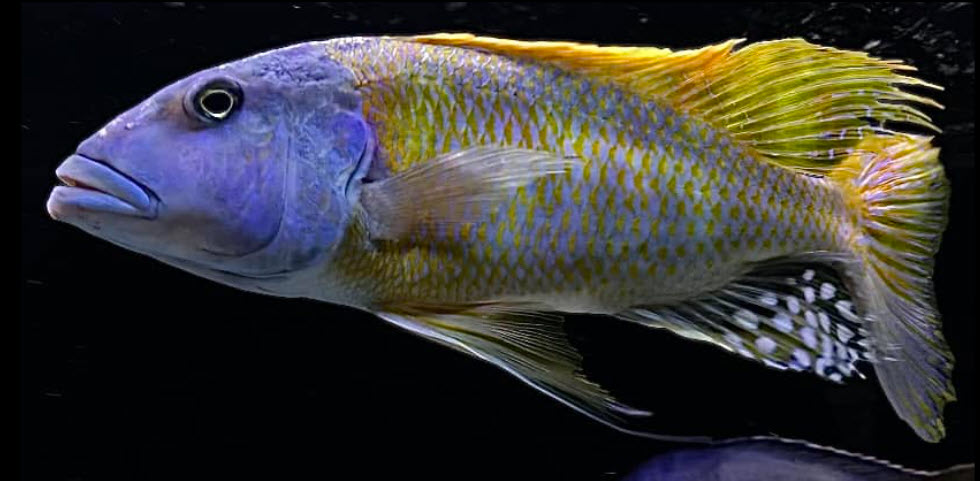
Additions
The phosphate fertilizer can be potassium, ammonium, calcium, or sodium phosphate powder (internet purchase). “Triple phosphate” is very good and is widely available in garden supply stores. Other names for “triple phosphate” are “superphosphate”, “superphosphides” or calcium dihydrogen phosphate. A high phosphate soluble fertilizer (“bloom” fertilizer) can be substituted.
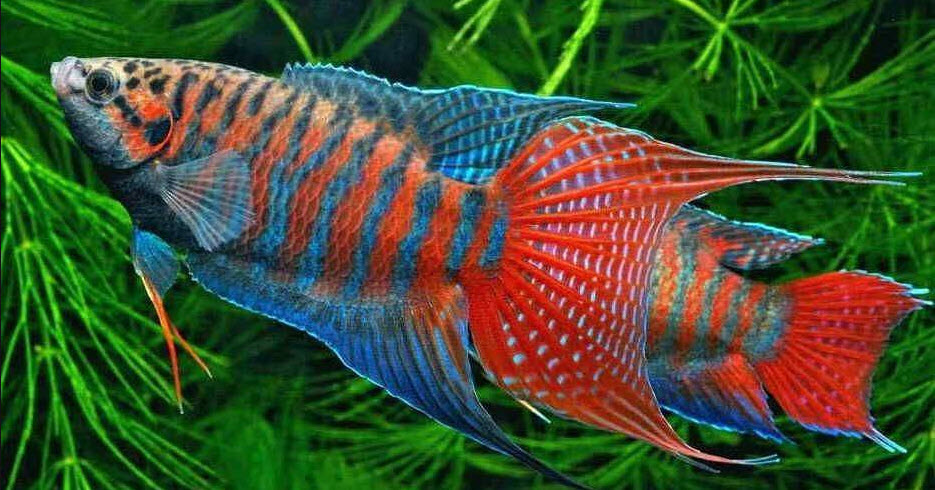
Note all my large aquariums (ten at last count) have huge amounts of biomedia surface area with powerhead operated under-gravel filters and large fluidized bed sumps. I am a big believer in “over-filtration”.
Note these chemical additions aren’t necessary and are very flexible. They just feed the beneficial bacteria everything they need and ensure the beneficial bacteria grow as fast as possible. Note this is an overload of chemicals and will result in levels of ammonia and nitrite which can be toxic to fish. Do not add any fish to this mix.
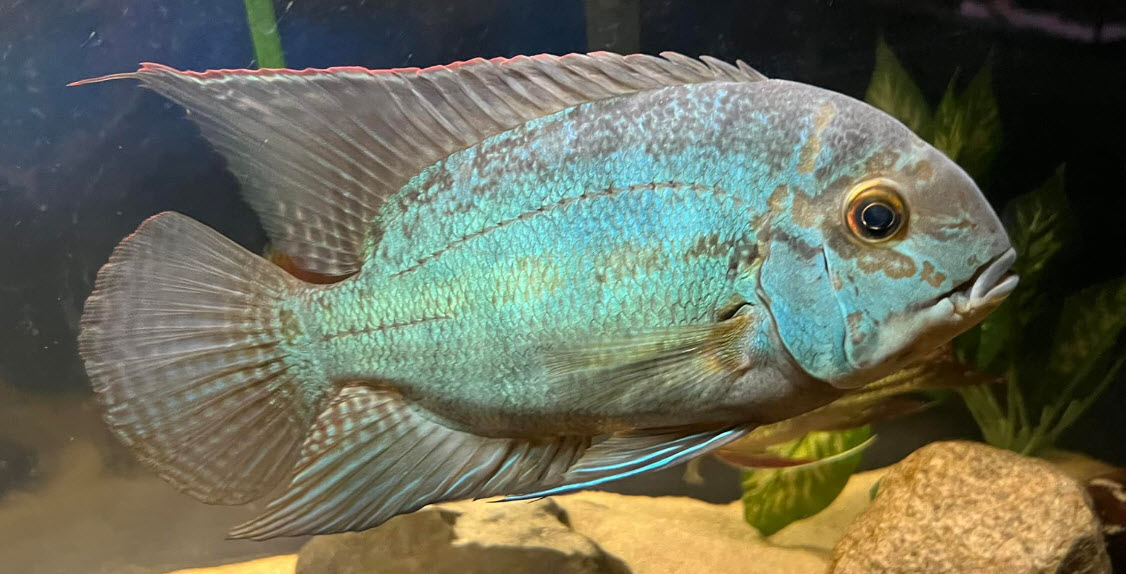
Sometimes the water will turn cloudy or green. Sometimes water molds will form globs of white which float about the aquarium. Ignore these conditions. They are harmless.
When the cycle is done sometimes there is zero ppm nitrate and sometimes there is over 160. I’ve stopped trying to predict that outcome. This chemical cycling process for ONLY the heavily filtered process gives an aquarium that can handle roughly 2 ppm per day of ammonia. This is a LOT of fish. The lightly filtered process is only 0.5 ppm.
Let’s do some boring math:
- One pound of fish (454 grams) needs 1.5% dry food per day
- The food is 40% protein
- 15% of protein is nitrogen
- ammonia is 1.2 times nitrogen level,
- 454 x 0.015 x 0.4 x 0.15 x 1.2 = 0.49 grams ammonia
- 0.36 grams is one ppm in a 100 gallon tank
- 0.49/0.36 = 1.36 ppm ammonia from one pound of fish in a 100-gallon aquarium
- In a 100-gallon aquarium light stocking of fish is 0.42 pounds
- moderate stocking is 1.4 pounds
- heavy stocking is 4.2 pounds
- Light stocking is thus 0.42 x 1.36 = 0.6 ppm per day
- Moderate stocking is 1.4 x 1.36 = 1.9 ppm per day
- Heavy stocking is 4.2 x 1.36 = 5.7 ppm per day ammonia in a 100-gallon aquarium.
So this type of cycling will give ammonia oxidation for “moderate” stocking for a well filtered aquarium. Note what we define as “moderate” stocking most web stocking guides will define as “100% recommended maximum stocking”.
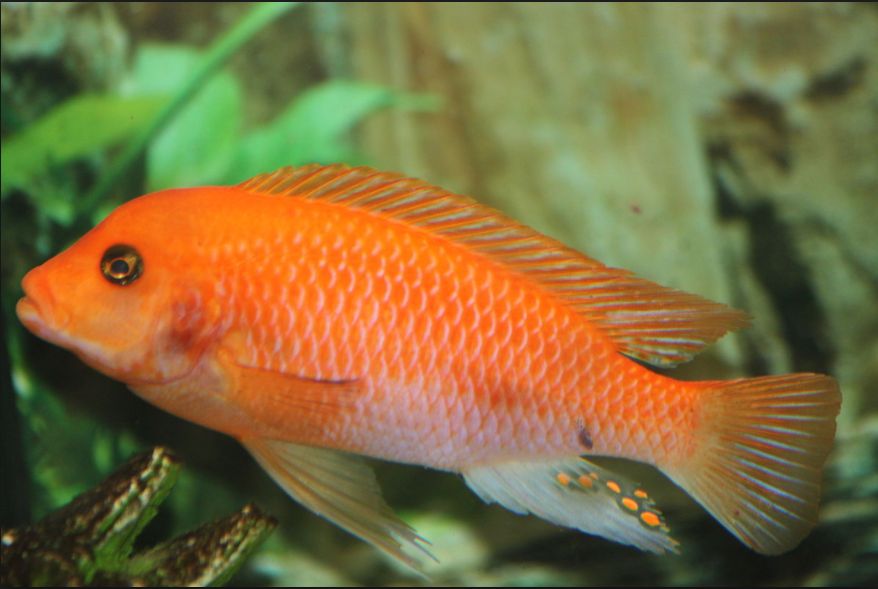
Mature Aquarium Development
I typically don’t rush things when I start up an aquarium. I try to get a “mature” aquarium. This takes patience. I will run any new aquarium for at least eight weeks without fish whether the tank processes ammonia in 24 hours or not. After the aquarium has “cycled” (ammonia and nitrite are zero) I make the following changes to the process:
- Add one teaspoon of dark brown pond mud and/or detritus
- Drop the temperature to 750 F (240 C). This gives me the proper algae growth.
- Measure pH and ammonia at the start of every week. I only do measurements once a week. Test kits can get expensive.
- Every day add one-quarter gram (one level eighth teaspoon, 0.5 ppm) ammonium chloride per fifty gallons if the ammonia level is less than 4 ppm at the start of the week. Only make one add per day and ignore where the ammonia lands.
- Every day add one level teaspoon per 50 gallons of high protein hydrated food. I use crushed fish filet but crushed whole shrimp will work. I limit the hydrated food to fish or shrimp because beef or pork isn’t in a form I like to add to the aquarium and has too much fat. One fourth level teaspoon per fifty gallons of any commercial dry food with a protein level over 45% will also work. Do this regardless of the ammonia level
- If you don’t plan on having plants, turn on the lights 24/7 to develop as much algae as possible in the aquarium. If the aquarium water turns green I just ignore it. It will clear in a few weeks.
- Leave the heavy aeration unless one is setting up a CO2 injected planted aquarium
- Note plants should be added at this point if one wants a planted tank. Only leave the lights on for five hours or so per day when doing this with plants.
- Keep the pH above 7.4 by adding sodium bicarbonate when the pH drops
- Do not change the water regardless of nitrate levels
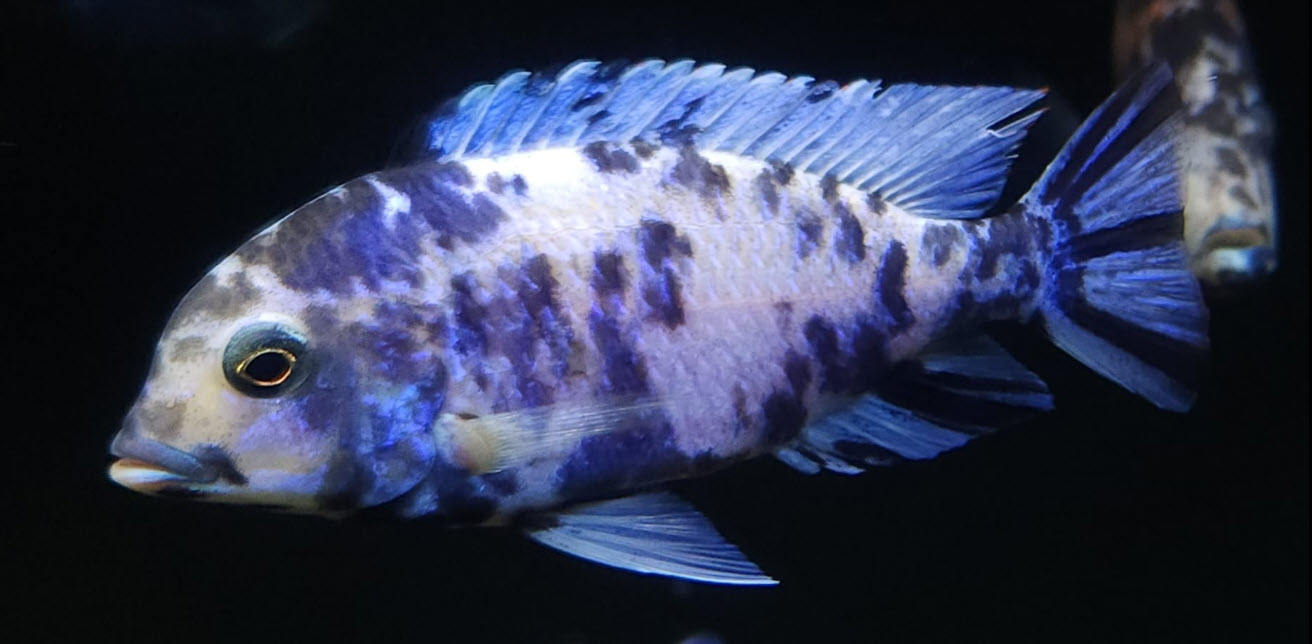
The food adds dissolve organic compounds to the water. These in turn feed heterotrophic bacteria. These bacteria feed rotifers and ciliated organisms in the filter. It is all part of trying to get a diverse ecology in a mature aquarium. Ammonia won’t do that. Food does it.
This is all so I get a “mature” aquarium with a thick layer of brown gunk in the filter and a lot of algae. This also gives me crystal clear water. Crystal clear water is bacteria-free water. And bacteria-free water ensures that fish remain healthy when they are added to the aquarium. A “mature” aquarium is a very stable and very healthy miniature ecosystem. The more brown gunk in the filter and the more algae one has, the more stable the aquarium ecosystem.
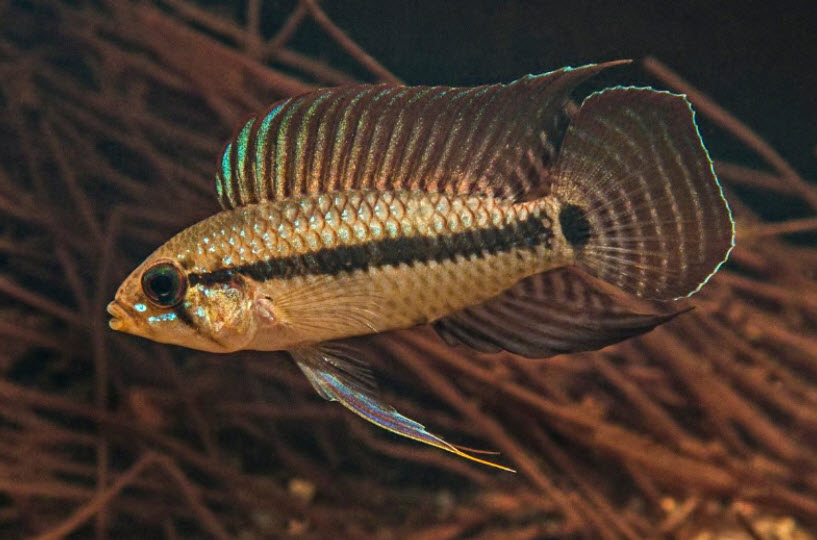
Note that many wonder what happens when “brown gunk” or algae die. Technically, while bacteria in “brown gunk” and algae do die, the dead organisms are always eaten and absorbed immediately by other organisms which are just as beneficial to the ecosystem. So, in a well-aerated aquarium, dying algae and brown gunk do not harm anything. The process is just part of a healthy ecosystem.
Before I add fish I will somewhat clean up the aquarium, removing most but not all the algae. I typically let the back panel of my aquariums become heavily encrusted with algae. Mature algae colonies are a very good source of vitamins and nutrients for a surprising number of fish species. The algae also harbor many small organisms that carnivorous fish feed on.
I do not vacuum the gravel (I use under gravel filters in all but my quarantine tanks). I also do not clean the filters unless the flow from them is noticeably reduced. I change out as much of the water as possible at the end of the six weeks to get rid of any nutrients remaining in the aquarium as this can feed excess algae growth.
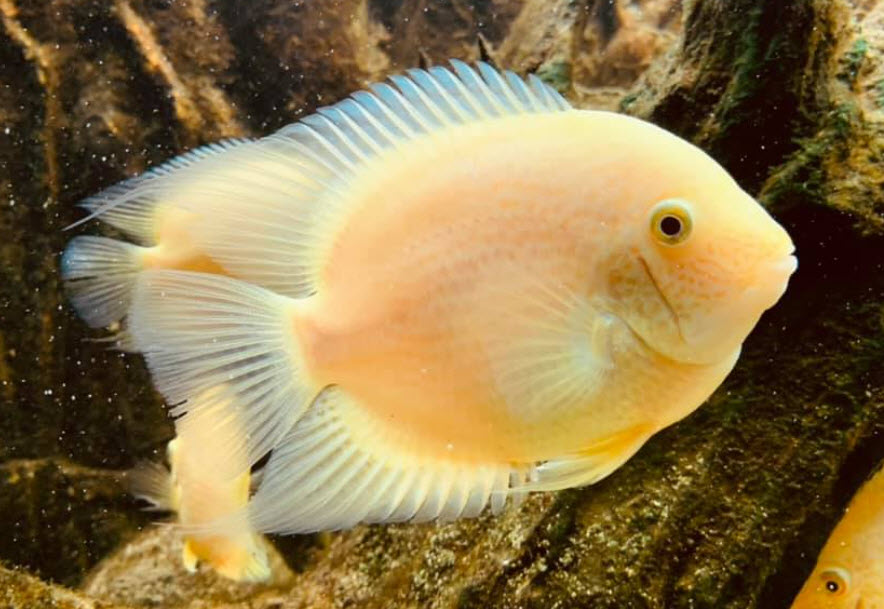
Biodiversity
When I first started my Florida aquariums 13 years back, I deliberately went out and obtained some brown scum and mud from a local pond. I put it in my first tank along with soil from a potted plant, Black Kow composted cow manure, and a half-full jar of old K2 filter media (filled with brown gunk) I brought from Arizona. I did this to get something called “biodiversity” in my filter brown gunk. Biodiversity is the key to a stable healthy aquarium. The population of this brown gunk in this first aquarium filter has seeded all my subsequent aquarium filters.
One way to add this biodiversity is to put teaspoons of pond mud in a sock. Put the sock in the filter of the new tank and just leave it for a month or two. Easy! Or you can just add it all directly to the tank water. Or you can bury it in the substrate. In a month or two you won’t even be able to tell you added anything. This is an inoculate for “beneficial organisms”, tiny protozoan and metazoan carnivores. These organisms are very important to the health of the aquarium. We go into this in more depth in this link:
2.14. The Mature Aquarium
.
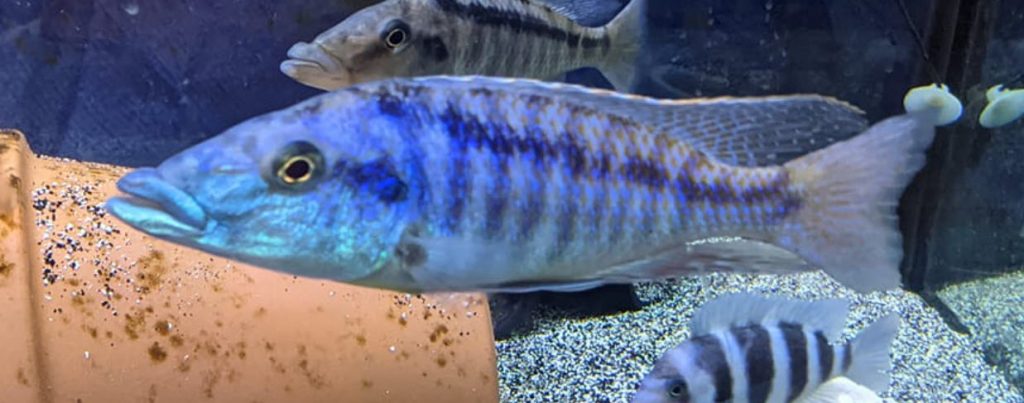
The Science
Here is a discussion of the science behind what I do above. It is not necessary to understand the science to use the process.
This process was based on formulas used by university researchers that study and grow beneficial bacteria (Gibbs 1919, Lewis 1958, Olah 1993, Tappe 1996, Willke 1996, Zhu 1999, Du 2003, Grzesiak 2017, Kasmurik 2018). This chemical mix reflects what they were using. This is a typical formula (not exactly what I use but typical):
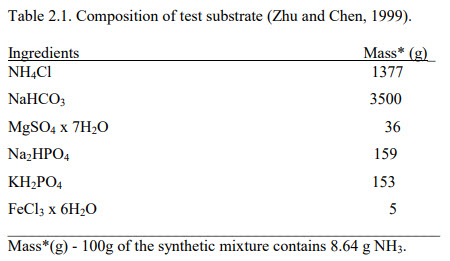
Now, most of the other formulas added calcium sulfate and calcium carbonate so I added that in the form of plaster of Paris. But ANY of the salt additions used by these researchers will work.
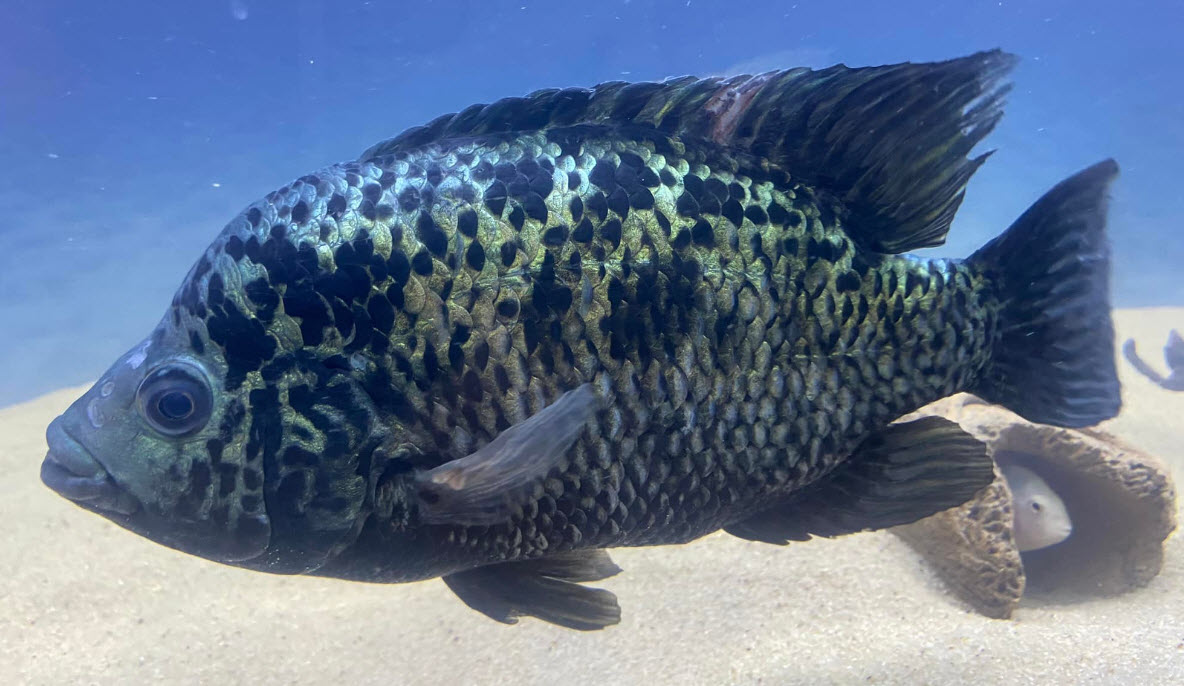
Note these researchers did not use yeast or sugar in their cultures. The sugar and the yeast adds were based on a paper by Fang: “Nitrification of Ammonia-Nitrogen in Refinery Wastewater”, Fang et. al., 1993:
“Wastewater from integrated petroleum refineries normally contains 20–80 mg/l ammonia-nitrogen which is harmful to the fishes in the receiving water bodies. To remove ammonia-nitrogen completely in the biotreatment system of refinery wastewater, various enrichment and cultivation methods of nitrifying bacteria were tried.
Results indicated that by supplementing glucose nutrients, over 90% ammonia-nitrogen in the refinery wastewater could be converted into nitrite within 7–14 days in either an activated sludge or rotating biological contactor system. Trace nitrate was detected. Further addition of yeast powder to the treatment systems stimulated the growth of Nitrobacter which accelerated the oxidation of nitrite to nitrate. Complete oxidation of the influent ammonia-nitrogen was observed 7 days later after adding 5 mg/l yeast powder to the influent wastewater. It also showed that neither glucose nor yeast powder was required for sustaining ammonia nitrification after the augmentation of Nitrobacter was achieved.”
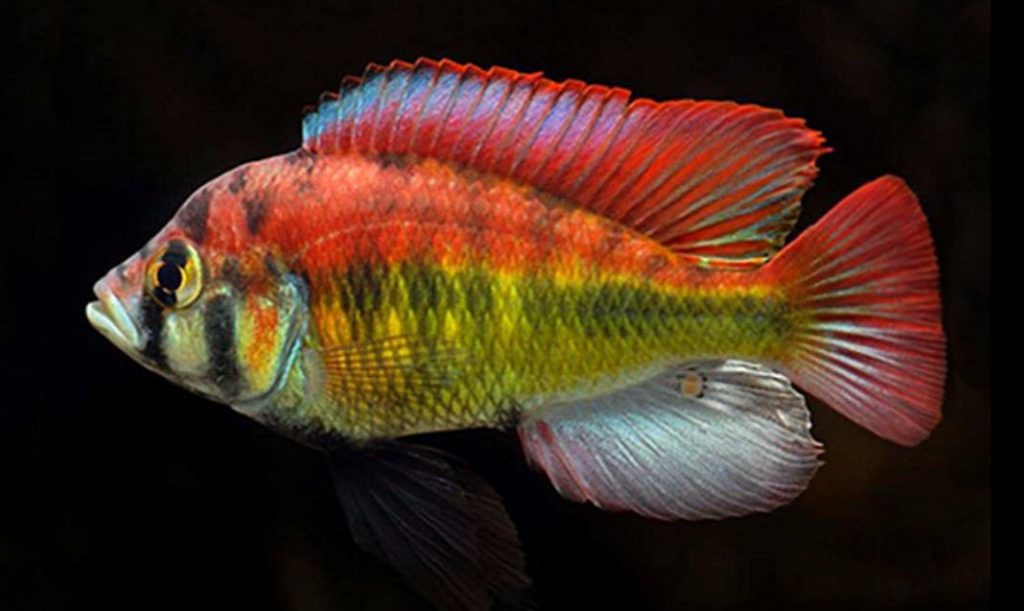
The process I use for cycling is also based on what is needed by beneficial bacteria (actually “nitrifying bacteria”). Beneficial bacteria are what are termed “obligative autotrophs”. What this means is that these bacteria cannot feed on “normal” food, namely proteins and carbohydrates. These bacteria MUST (note the term obligative!) feed on chemicals, namely three chemicals: ammonia gas (NH3), bicarbonate (HCO3), and oxygen (O2). They use these chemicals to make up the proteins and ingredients in their bodies.
Because these bacteria feed on these three chemicals anything which increases the amount of all three chemicals will increase the rate at which the beneficial bacteria multiply. So cycle time of an aquarium can be decreased by doing three things in unison:
- Adding more ammonia (NH3) (the ammonium chloride above)
- Adding more bicarbonate (HCO3) by adding sodium bicarbonate sufficient to keep the pH above 7.4
- Adding more oxygen (O2) (the heavy aeration provides the oxygen)
In addition, all living things need phosphate. The basis of life, the DNA molecule, is phosphate-based organic compound. The energy cycle in all cells is based on ATP, another phosphate-based organic compound. And small amounts of sulfate are also needed in all living cells.
And the sodium nitrite is added simply to give the bacteria that convert nitrite to nitrate a head start. Otherwise, these bacteria need to wait till the ammonia converting bacteria convert ammonia to nitrite.
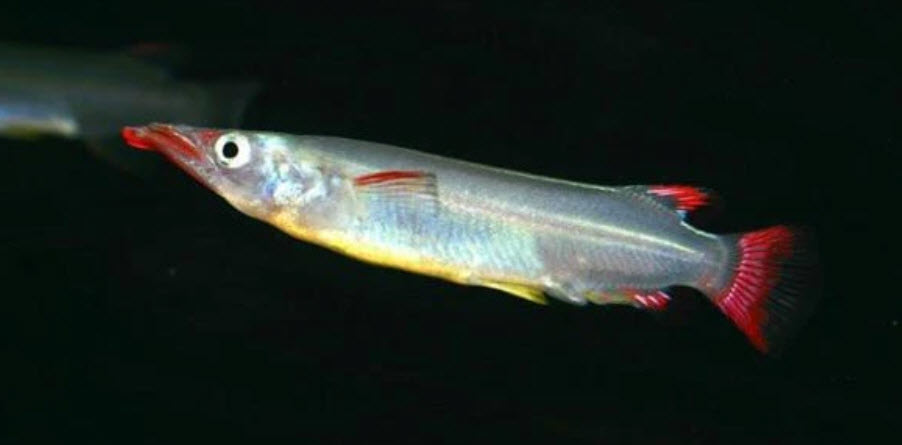
The use of sugar is complicated. There is something called the “carbon-nitrogen ratio”. If ten parts carbon (i.e. carbohydrates like sugar) is added to one part nitrogen (i.e. ammonia like ammonium chloride), research has shown there is an explosion of heterotrophic bacteria which will literally “eat” the ammonia within two hours and convert it into protein inside the bodies of heterotrophic bacteria.
These heterotrophic bacteria then rapidly form the initial thin biofilm needed for the autotrophic beneficial bacteria to thrive. This is why the sugar is a one-time add. Continue to add it and the heterotrophic bacteria will smother the autotrophic bacteria, which is not good.
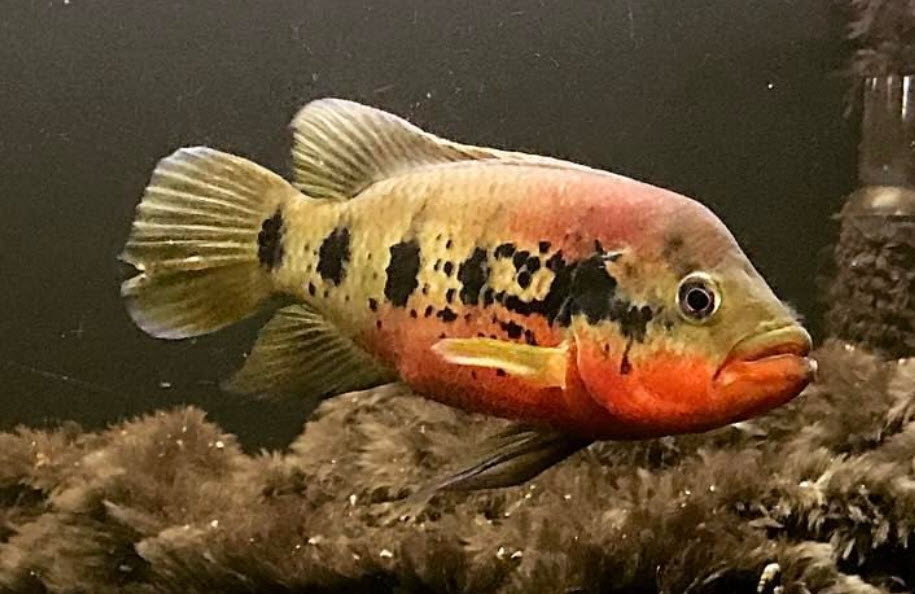
To complete this article let me repeat something: This method is VERY complex and just not needed for most hobbyists. So use one of the simpler methods described in the articles below if you are not interested in becoming very confused. Or one can modify this method by just using a few of the methods and chemicals described.
Note also that the whole cycling “science” is a natural process. There are hundreds of variables that one cannot control. So sometimes one can cycle in days and sometimes it can take months, no matter what one does. Mother Nature is just not very predictable.
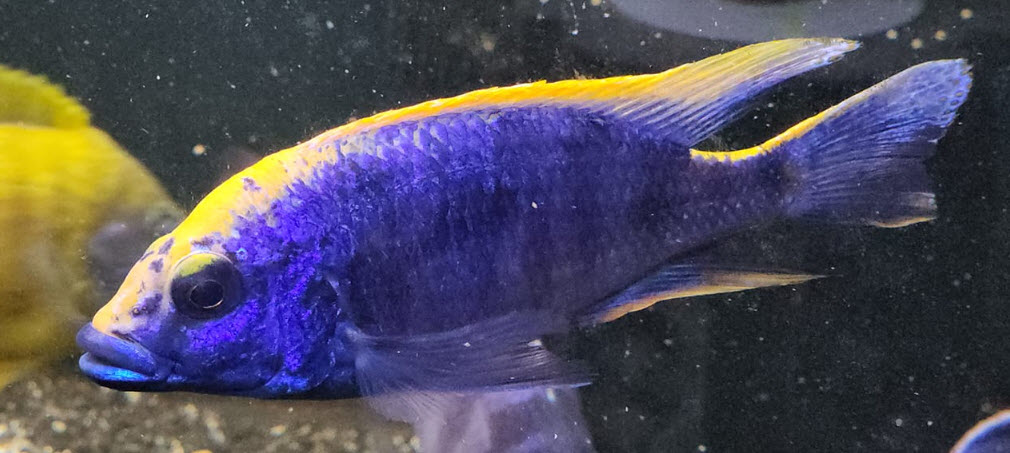
Other Less Complicated Ways to Cycle an Aquarium
To go into all the various simpler ways to cycle an aquarium click on the following links:
2.1. Standard Fish-less Cycling
2.2. The Many Ways to Cycle a Tank
2.4. Cycling with Ammonia
2.5. Fish-in Cycling
2.6. Not Cycling at All
.
Return to Cycling Menu
.
Aquarium Science Website
The chapters shown below or on the right side in maroon lead to close to 400 articles on all aspects of keeping a freshwater aquarium. These articles have NO links to profit-making sites and are thus unbiased in their recommendations, unlike all the for-profit sites you will find with Google. Bookmark and browse!
.

Rebel says
How do you recommend cycling a tank for people that want to have a low pH tank, such as for blackwater fish etc?
Duy says
Would worm castings work in place of composted manure? Supposedly worm castings have more bacteria in it than other fertilizers but I haven’t seen anything scientific to back up that claim.
Dave says
In reply to anonymous ……. Yes your three weeks at less than 6.0 pH didn’t do a thing for the cycle. With the baking soda things should start up.
Anonymous says
I’ve been cycling for 3 weeks, and i never use test kit or anything until just now, and it shows that the ph is about 6. does it mean my 3 weeks is meaningless?
i added baking soda and it’s shows 8
Dave says
In reply to Felipe …. No. Nitrite titrant is not a nitrite.
Felipe bivort haiek says
It seems I can get nitrite titrant. Is this a safe option if I keep the same nitrite ppm?
Dave says
In reply to Felipe …… Just skip the nitrite.
Felipe bivort haiek says
Hi Dave thank you a lot for this chapter. I am having a hard time getting pure sodium nitrite online. Do you have any suggestions or alternatives?
Jennifer Foote says
I started out wrong (bacteria in a bottle and Dr. Tim’s ammonia) then found your page and morphed it into your “how I cycle” minus the yeast as I didn’t have any. The dirt I used was from fishing worms that have been in a tub in my fridge all Summer lol 😉 So on day 19 my ammonia magically disappeared, I dosed it back up to 2ppm and it was gone again yesterday, did it again last night and here are my test results (ammonia 0-.25, still have a little nitrite colors don’t match so .25-5, nitrate 10-20 so don’t know if I’m cycled)? Thanks so much for your amazing insights, I have read EVERYTHING you posted! Thought I could post a picture but don’t know how…
Dave says
In reply to Osman …. Even medicine loaded urine will do just fine. Urine is vastly underrated as a start-up solution for cycling.
Osman says
Dear Dave,
How about useing medicine free urine.
Kind regards
Osman
Dave says
In reply to Brian …. In any experiment with one tank and multiple variables one simply cannot tell what variable gave the outcome that was anticipated. There is just no way to know what variable caused the tank to suddenly cycle.
Brian says
Thank you so much for this site. I have a question for you: is there a need for trace elements in the conversion of nitrite to nitrate?
I’m asking because of my recent experience fishless cycling a 10 gallon tank mostly following your “How I Cycle” instructions. I started a 10gal with RO/DI water which I remineralized with Seachem’s Equilibrium plus Alkaline/Acid Buffer combo to 4dKH, 6dGH. Added a dash each of superphosphate and ferrous sulfate heptahydrate. Cheap HOB filter with a bag stuffed full of K1 media, with a little from an established tank. Heater 75F, heavy water circulation with a powerhead and venturi aeration. No lights, no plants, several small pieces of driftwood in the tank, some junk snails that came in with the filter gunk.
Using the Dr Tim’s ammonium chloride solution I added 2ppm ammonia daily along with a different form of fish food daily. After 15 days I had measurable nitrite (>5ppm on the API test kit). Used baking soda along the way to increase pH as needed. Continued daily ammonia additions. By day 30 diluting the nitrite test 50-100x with RO/DI showed me levels >100ppm, and I added a half tsp of garden soil and a little filter gunk from another tank. Continued daily additions of some, but not much, ammonium chloride. Day 43 I added another dash of superphosphate (PO4 then tested at about 2ppm).
Day 45 I still showed >100ppm nitrite, and added 2.5mL of Seachem’s Flourish Trace.
Day 47 nitrite looked to be between 50-100ppm. Today, day 49, ammonia and nitrite test at zero. The biofilter seems to have consumed >100ppm of nitrite in 4 days. No significant algae growth that would have done it.
Is it a coincidence that 4 days after adding some trace elements to a tank that may have been deficient in them that the nitrite suddenly turned over? It could be the garden soil or filter gunk added two weeks earlier, or the phosphate a week ago, but the temporal proximity makes me wonder. I’m interested in your thoughts.
Millie says
““What I do” is a complicated fishless method that illustrates what an obsessive-compulsive chemist can come up with. This method is covered in this article.”
Well, this ADHD-er is extremely appreciative of your knowledge and traits. I’m totally distracted with reading your articles, meaning I’m leaving my new tank alone to do it’s thing!
Although, worm castings have me intrigued, might hyper-fixate on that for a while 🤔
P.S. Took me a few too many Google oases, but glad I have found you and your honest sciencey outlook 😊
Dave says
In reply to Jonathan ….. IN THEORY one could add that much. I’ve never tried it so I don’t know how well it would work.
Jonathan Piacentino says
If optimum concentration ammonia and nitrite is 400-600 ppm and 200ppm-400ppm respectively. Could one potentially add the equivalent amount of ammonia salt at the initial dosing for cycling (with sufficient filtration)
Dave says
In reply to Jonathan ….. Simply multiply everything by 4/5 ths or 80% (0.80). Alternatively just leave the recipe the same. This isn’t rocket science and the exact quantities of each chemical is not critical.
Jonathan Piacentino says
Hi Dave,
I’m deciding to get back into the aquarium hobby since my last tank had perished in a major power outage 5 years ago, I had been keeping fish since I was in 5th grade, all the way back in 2003. But this time I’d like to do it right. For your method of cycling it uses 50 gallons for your ratio. If I do proportional adjustment for 40 gallons will the measurements still produce the same adjusted output for each chemical interaction. Would suggest adjusting for 40 gallons or find the chemical addition per 1 gallon and then multiply that by 40